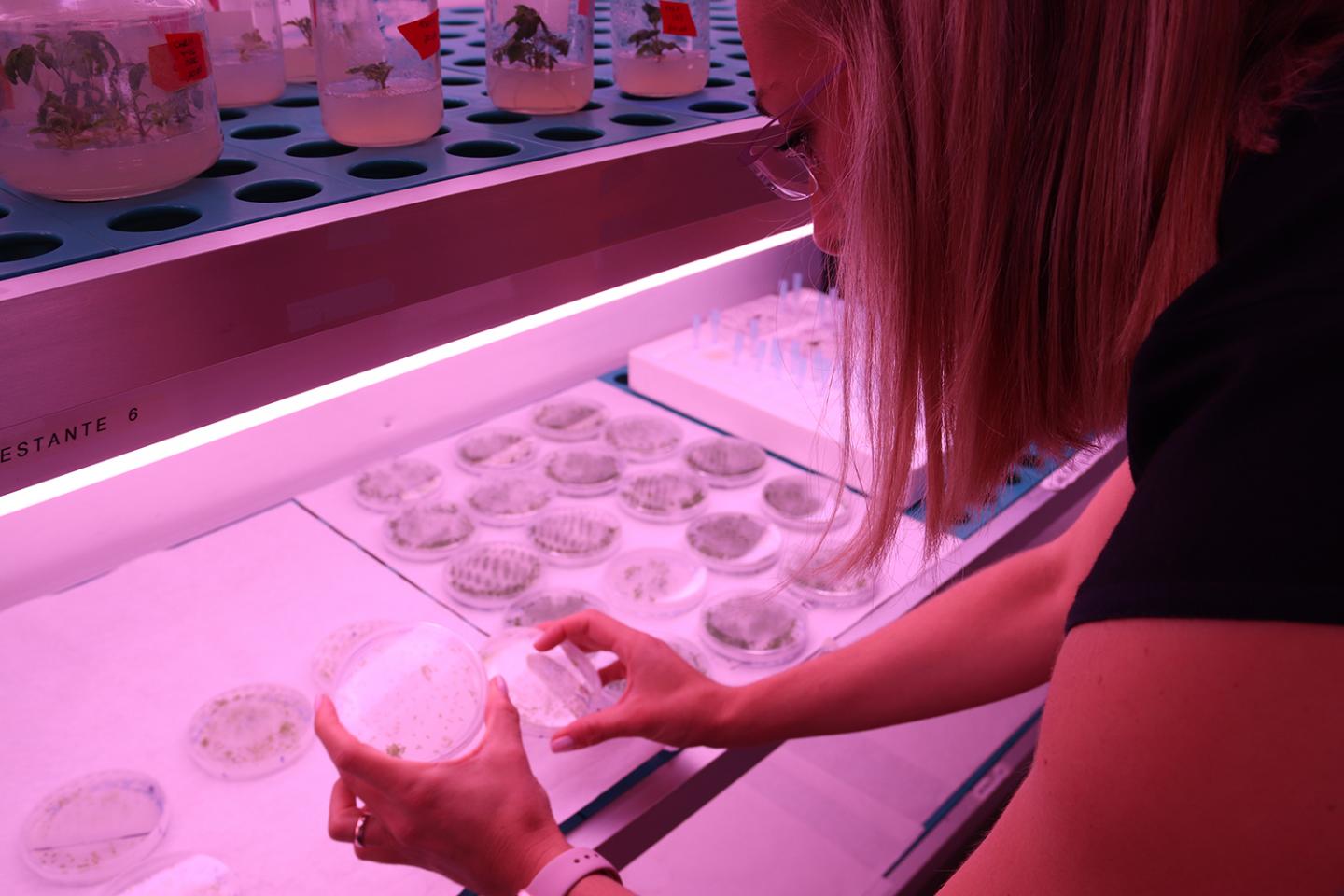Researchers have shown how protein BAG4 takes part in regulating the plant’s breathability through the opening of its stomas.
Valencia Polytechnic University (UPV) and Malaga University (UMA) researchers have discovered a new function of one of the plant’s proteins – BAG4. In their study, they show that this protein takes part in regulating the plant’s breathability, the transporting of potassium to occlusive cells and, therefore, the opening of stomas, the pores located on the leaves and through which the plant breaths. This finding is especially relevant for the development of crops that are more resistant to drought conditions. Their work has been published in journal Plant Physilogy.
In the study, in which French centre BPMP (Biochimie et Physiologie Moléculaire des Plantes) has also taken part, researchers firstly carried out an analysis of the proteins that are able to physically interact with the channel that regulates the entry of potassium into the plant’s occlusive cells – called KAT1 – to then study how this protein regulates the functioning of KAT1.
“KAT1 is responsible for the entry of potassium into occlusive cells, which directly affects the opening of stomas and, ultimately, the plant’s breathability. Our objective was focused on learning how the transporting of potassium was regulated to, in the future, be able to improve it,” explains Antonella Locascio, researcher from the Plant Molecular and Cellular Biology Institute (IBMCP), a mixed centre of the UPV and CSIC (Spanish National Research Council).
To do so, the teams of the UPV, UMA and BPMP searched for proteins that directly interact with the KAT1 channel, using the Arabidopsis thaliana as the model plant. “We conducted a biochemical and genetic study of protein BAG4 to assess its interaction and effect on the channel. And through this study, we discovered that the presence of this protein significantly improves the transporting of potassium, favouring its arrival to the plasma membrane of the plants,” explains Lynne Yenush, fellow researcher of the IBMCP.
As the researchers highlight, identifying physiologically relevant regulators, in this case protein BAG4, opens the door to new strategies to obtain plants that are more resistant to situations of hydric stress and that are less vulnerable to the action of different pathogens.
“Stomas, as well as being an essential structure for regulating the efficiency in the use of water, are also the entry door to numerous pathogens that affect agriculture. Learning how the complex opening and closing process of the stomas works on a molecular level can help us design crops that are resistant to plagues and droughts,” adds José Miguel Mulet, researcher of the IBMCP.
Read the paper: Plant Physiology
Article source: RUVID
Image credit: Valencia Polytechnic University (UPV)








